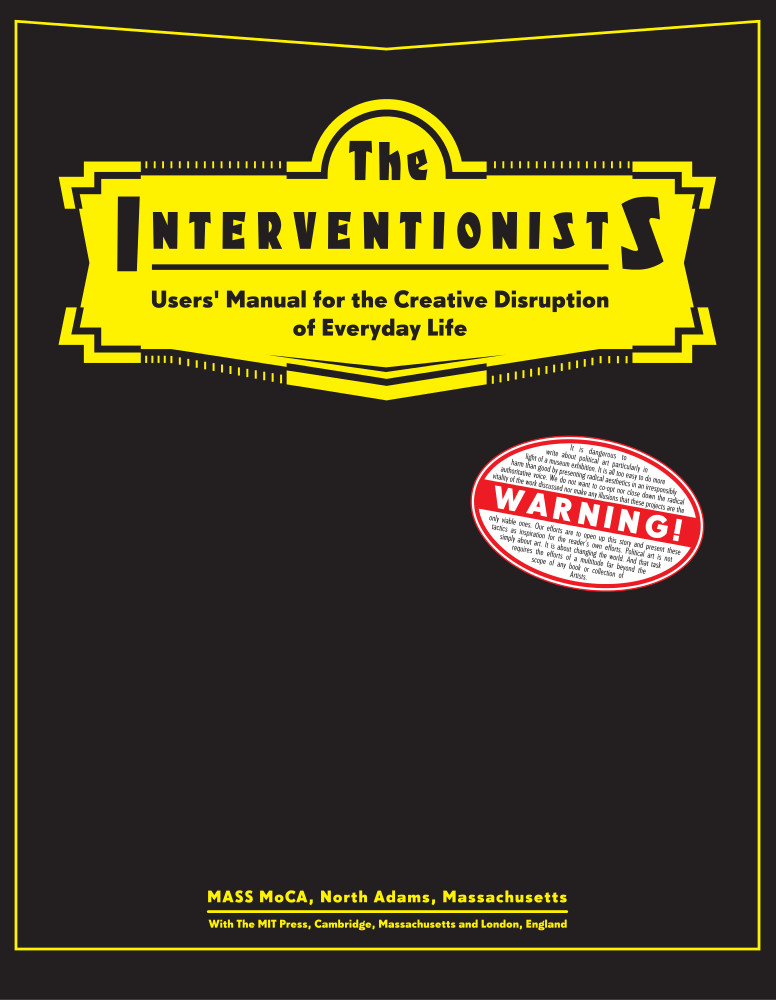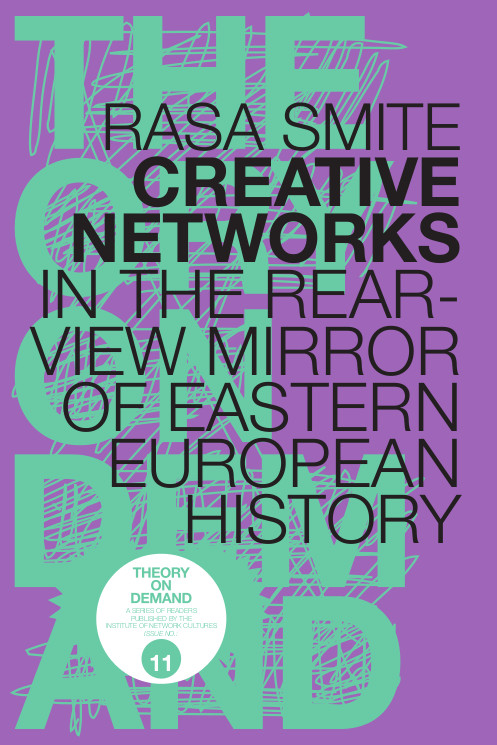Nato Thompson, Gregory Sholette (eds.): The Interventionists: Users’ Manual for the Creative Disruption of Everyday Life (2004)
Filed under book, catalogue | Tags: · activism, art, cyberfeminism, education, participation, political art, politics, situationists, tactical media

“Art made to attach to buildings or to be given away? Wearable art for street demonstrations or art that sets up a booth at a trade show? This is the art of the interventionists, who trespass into the everyday world to raise our awareness of injustice and other social problems. These artists don’t preach or proselytize; they give us the tools to form our own opinions and create our own political actions. The Interventionists, which accompanies an exhibit at MASS MoCA, serves as a handbook to this new and varied work. It’s a user’s guide to art that is exciting, provocative, unexpected, inspiring (artistically and politically), and fun. From Michael Rakowitz’s inflatable homeless shelter and William Pope.L’s “Black Factory” truck with pulverizer, gift shop, and giant inflatable igloo to the Biotic Baking Brigade’s political pie-throwing, the art of The Interventionists surveys a growing genre and offers a guide for radical social action.
The book classifies the artists according to their choice of tactics: the Nomads, who create mobile projects; Reclaim the Streets, artists who act in public places; Tools for Resistance: Ready to Wear, artists who produce fashion for political action; and the Experimental University, artists whose work engages pedagogy and theory. The accompanying text includes essays by noted scholars putting the work in a broader cultural and social context as well as texts by the artists themselves.”
With contributions by Nicholas Mirzoeff and Ondine C. Chavoya
With graphics by Arjen Noordeman
Publisher MASS MoCA Publications, North Adams/MA, 2004
154 pages
PDF (updated on 2019-12-18)
Comment (0)Rasa Smite: Creative Networks: In the Rearview Mirror of Eastern European History (2011/2012)
Filed under book | Tags: · actor-network theory, cyberfeminism, eastern europe, internet, internet art, internet culture, latvia, media art, net art, network culture, networks, sound art, virtual communities

“Creative Networks explores the dawn of the Internet culture in the age of network society from the perspective of Eastern Europe. From a theoretical angle the networks are introduced and interpreted as complex socio-technical systems. The author analyzes the development of these networked self-organized formations starting off with ‘virtual communities’ of ‘creative networks’, which emerged during the early phase of the Internet, up to the phenomena of today’s online ‘social networks’. Along with the translocal case studies of Nettime, Syndicate, Faces and Xchange networks (as well as with the other important facets of the 1990s network culture in Europe), the author studies also local community networking case of alternative and digital culture that evolved around E-Lab in the 1990s in Latvia. By focusing primarily on the network culture of 1990s, this study reflects those changes in the social structure of today’s society that are occurring under the process of socio-technical transformation.
The book is based on a dissertation by Rasa Smite, with the title Creative Network Communities and was defended in Riga Stradins University, February 2011.”
First published in Latvian in Riga: RIXC and Liepaja: LiepU MPLab, 2011.
Translated by Linda Vebere
Publisher Institute of Network Cultures, Amsterdam 2012
Creative Commons Attribution Noncommercial No Derivative Works 3.0 Netherlands License
ISBN 9789081857505
160 pages
Review: Piibe Piirma (Baltic Screen Media Review, 2014).
PDF (updated on 2023-9-27)
Comment (0)Sadie Plant: Zeros + Ones: Digital Women and the New Technoculture (1997)
Filed under book | Tags: · computing, cyberfeminism, feminism, history of computing, history of technology, machine, technology, women

“Zeros and Ones is an intelligent, provocative and accessible investigation of the intersection between women, feminism, machines and in particular, information technology. Arguing that the computer is rewriting the old conceptions of man and his world, it suggests that the telecoms revolution is also a sexual revolution which undermines the fundamental assumptions crucial to patriarchal culture. Historical, contemporary and future developments in telecommunications and in IT are interwoven with the past, present and future of feminism, women and sexual difference, and a wealth of connections, parallels and affinities between machines and women are uncovered as a result. Challenging the belief that man was ever in control of either his own agency, the planet, or his machines, this book argues it is seriously undermined by the new scientific paradigms emergent from theories of chaos, complexity and connectionism, all of which suggest that the old distinctions between man, woman, nature and technology need to be radically reassessed.”
Publisher Fourth Estate, 1997
ISBN 1857026985, 9781857026986
305 pages
Reviews: Nina Wakeford (New Scientist, 1997), Publishers Weekly (1997), Gyrus (Dreamflesh, 2008), Laura Lee (n.d.), Marta I. González García (Revista del Libros, 2001, ES).
PDF (23 MB, updated on 2019-6-18)
Comment (0)
